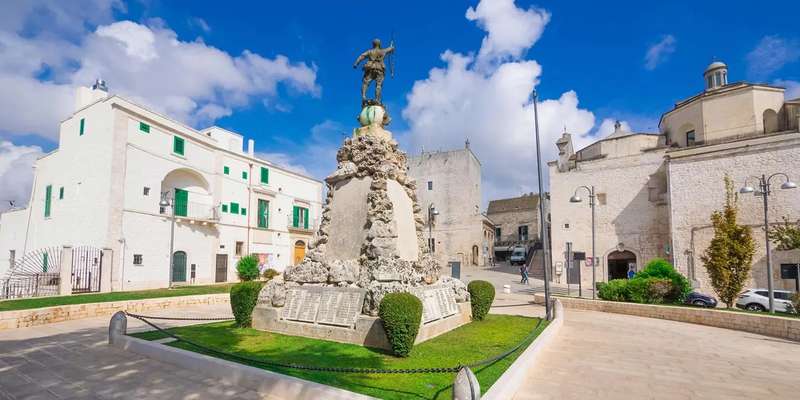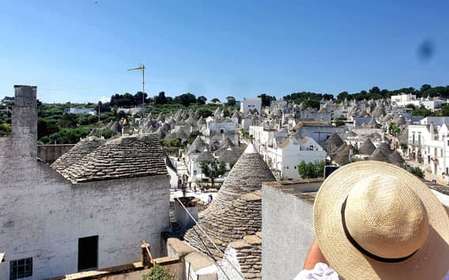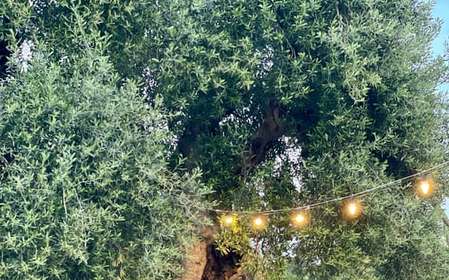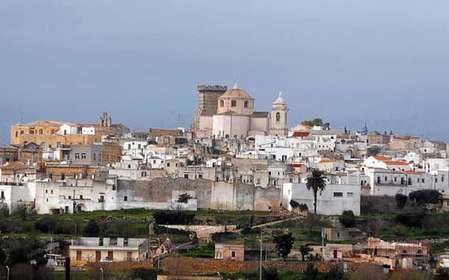- Home
- Useful Tips
- Brindisi for architecture enthusiasts
Brindisi's architectural treasures often get overshadowed by more famous Italian destinations, leaving culture-hungry travelers frustrated. Over 60% of visitors to Puglia miss Brindisi's unique blend of Romanesque, Baroque and Norman styles simply because they don't know where to look. Architecture enthusiasts waste precious vacation hours wandering past underwhelming modern buildings while breathtaking 12th-century churches stand unnoticed just streets away. The city's complex history - from Roman port to medieval crossroads - created layers of design genius that most guidebooks barely mention. Without local knowledge, you risk missing the subtle details that make Brindisi's architecture truly special: the Arab-Norman arches hidden in plain sight, the Baroque facades that tell stories of maritime wealth, the Roman columns repurposed into cathedral walls. This isn't just about seeing beautiful buildings - it's about understanding the cultural DNA of a city that served as gateway between East and West for centuries.


Decoding Brindisi's architectural layers - what most tourists miss
Brindisi's architecture tells a 2,000-year story that most visitors walk right past. The Roman columns incorporated into the Cathedral's walls aren't just decorative - they're recycled from the ancient port that made this city crucial to empires. Those seemingly plain medieval churches? Their squat towers and small windows were designed for defense against pirate raids. The ornate Baroque balconies along Corso Roma aren't mere decoration - they symbolize the wealthy merchants who dominated Mediterranean trade. Local architects developed unique solutions to coastal challenges, like the volcanic stone used in Palazzo Granafei-Nervegna that withstands sea air corrosion. True appreciation comes from understanding how Norman conquerors, Swabian kings and Venetian traders all left their mark in brick and mortar. The city's greatest architectural trick is how it seamlessly blends these influences into what appears at first glance to be a simple port town.
The essential Brindisi architecture walk - a local's route
Start your architectural journey where ancient Rome meets the Middle Ages at the Romanesque San Giovanni al Sepolcro church, noting how its circular design echoes Jerusalem's Holy Sepulchre. Walk toward the sea along Via Colonne to spot the rare example of a complete Roman triumphal column still standing in its original location. Duck into side streets to discover Palazzo Montenegro's Catalan-Gothic windows, a style almost unseen elsewhere in Puglia. The real magic happens when you reach the lesser-known Church of Santa Maria del Casale - its faded 14th-century frescoes and alternating white stone/red brick patterns showcase the unique Brindisi blend of Byzantine and Western styles. Finish at the waterfront Aragonese Castle, where you can trace three distinct construction phases from its Norman foundations to Spanish additions. This 2km route packs twenty centuries of architectural innovation into one manageable walk, avoiding the crowds that cluster around more obvious landmarks.
When to visit Brindisi's architectural highlights - timing secrets
Architecture lovers face two challenges in Brindisi - harsh midday light that flattens building details, and unexpected closures of smaller sites. Local experts recommend starting at 8am when soft morning light perfectly illuminates the carved portals of the Cathedral. Tuesdays and Thursdays see fewer cruise ship groups at major sites, while many hidden churches open their doors for evening passeggiata (around 6-7pm) when caretakers are present. Summer visits require strategic planning: the cool marble interiors of Chiesa di San Benedetto offer respite from afternoon heat while you study its rare women's gallery. November brings the bonus of seeing Palazzo Nervegna's courtyard without summer crowds, when the play of rain on its stonework highlights the masonry techniques. Whatever the season, always check local feast days - you might stumble upon normally closed buildings opened for special celebrations, like the rarely accessible upper loggia of the Bishop's Palace during the San Teodoro festival.
Beyond the guidebooks - Brindisi's living architectural traditions
Brindisi's architectural legacy isn't frozen in history - local artisans still practice centuries-old techniques that shaped the city's skyline. The last remaining pietra leccese stone carvers work near Porta Mesagne, their delicate floral motifs echoing those on 18th-century balconies. At the working boatyards along the canal, you can witness the same wooden truss systems used in medieval church roofs being applied to modern fishing vessels. Even contemporary buildings like the new courthouse incorporate traditional passive cooling systems inspired by historic palazzos. For the ultimate living architecture experience, visit during the Festa dei Cortili when normally private noble residences open their courtyards, revealing how families have adapted ancient structures for modern life. These living connections between past and present make Brindisi's architecture scene uniquely vibrant - not just a museum of styles, but a continuing conversation across generations.



